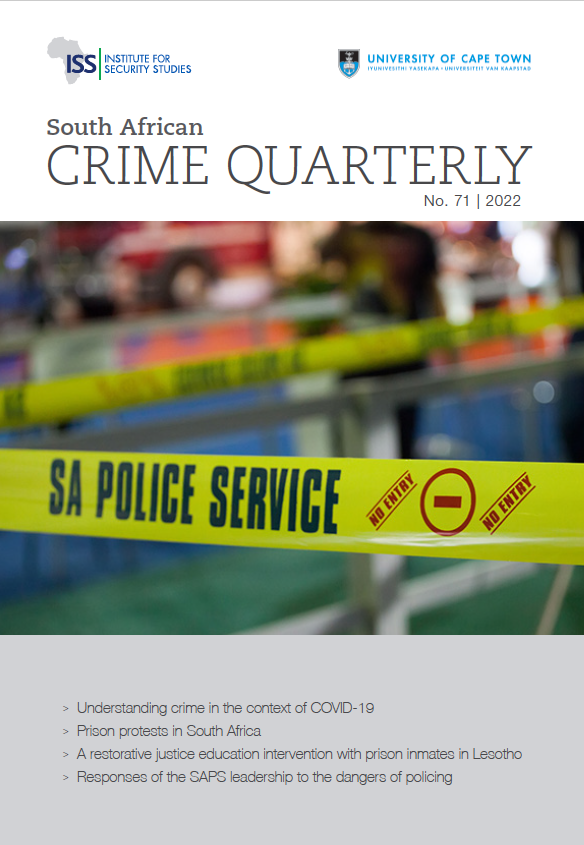Understanding crime using GIS and the context of COVID-19: The case of Saldanha Bay Municipality
DOI:
https://doi.org/10.17159/2413-3108/2022/i71a9539Abstract
South Africa faces high levels of crime. The Saldanha Bay Municipality, the setting of this study, is laden with poverty, unemployment and gangsterism that deprive quality of life and contribute to social ills. While crime management and prevention strategies require information regarding crime trends, this information for the Saldanha Bay Municipality area is limited. Hence, the study aimed to illustrate the spatial distribution and trends of crime in the Saldanha Bay Municipality, focusing on the period January 2017 to June 2020, and to indicate the recent impact of COVID-19 on these crime trends. The results of the study are presented by means of graphs and tables, and hotspot mapping was done using the ArcGIS Getis-Ord Gi* statistics tool. These results indicate that crime has increased over the past three years and that criminal activities are linked to urban hubs where most people stay and work. In terms of the effect of the COVID-19 pandemic and the lockdown regulations on crime, it is interesting to note the variations in crime rates during the first three months of lockdown (from April 2020 to June 2020) when compared to the rest of the period under investigation. Amongst the five towns investigated, the town of Vredenburg which has the highest population total and was ranked highest in terms of crime rates prior to the lockdown, moved from first to third, behind Langebaan and St Helena Bay. Similarly, Saldanha Bay with the second highest population total moved down to fourth. Hopefield was still the town with the lowest mean crime rate.
Downloads
Downloads
Published
Issue
Section
License
Copyright (c) 2022 Author and University of Cape Town

This work is licensed under a Creative Commons Attribution 4.0 International License.
SACQ is licenced under a creative commons licence (CC BY) that allows others to distribute, remix, tweak, and build upon your work, even commercially, as long a they give appropriate credit, provide a link to the license, and indicate if changes were made. They may do so in any reasonable manner, but not in any way that suggests the licensor endorses you or your use.
Copyright for articles published is vested equally between the author/s, the Institute for Security Studies and the Centre of Criminology (UCT).



.png)